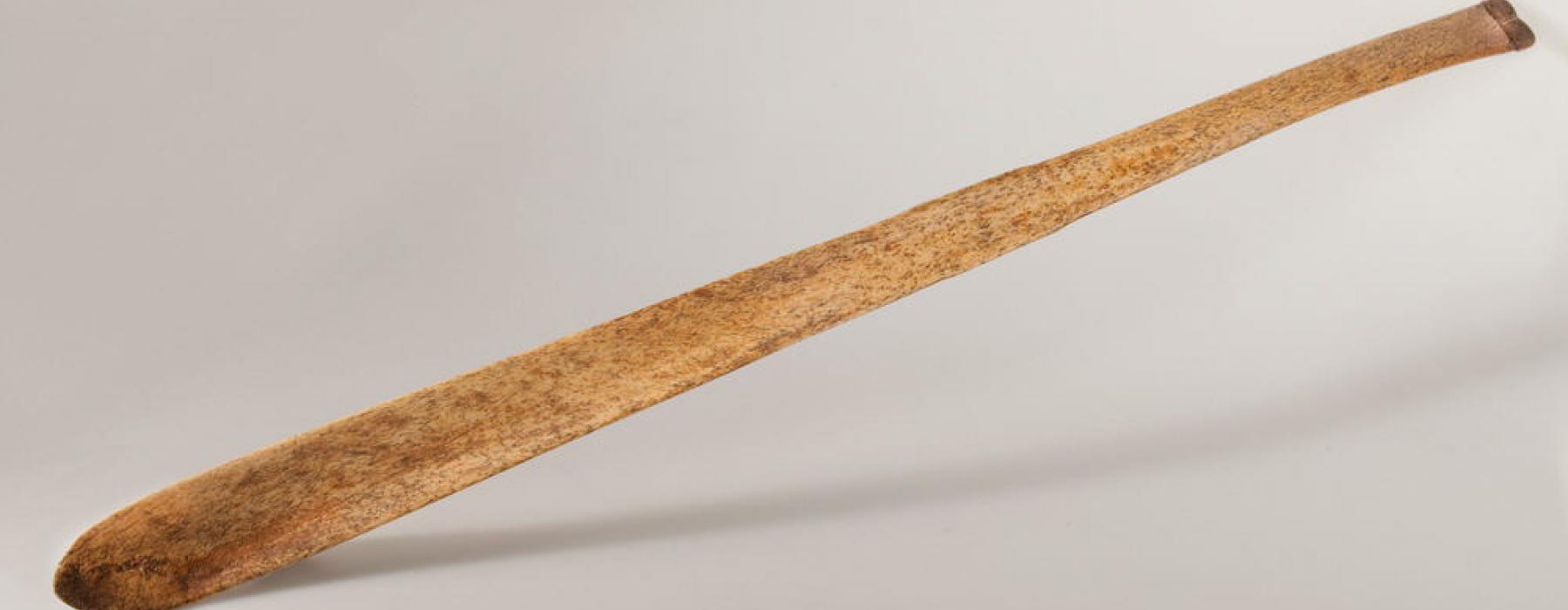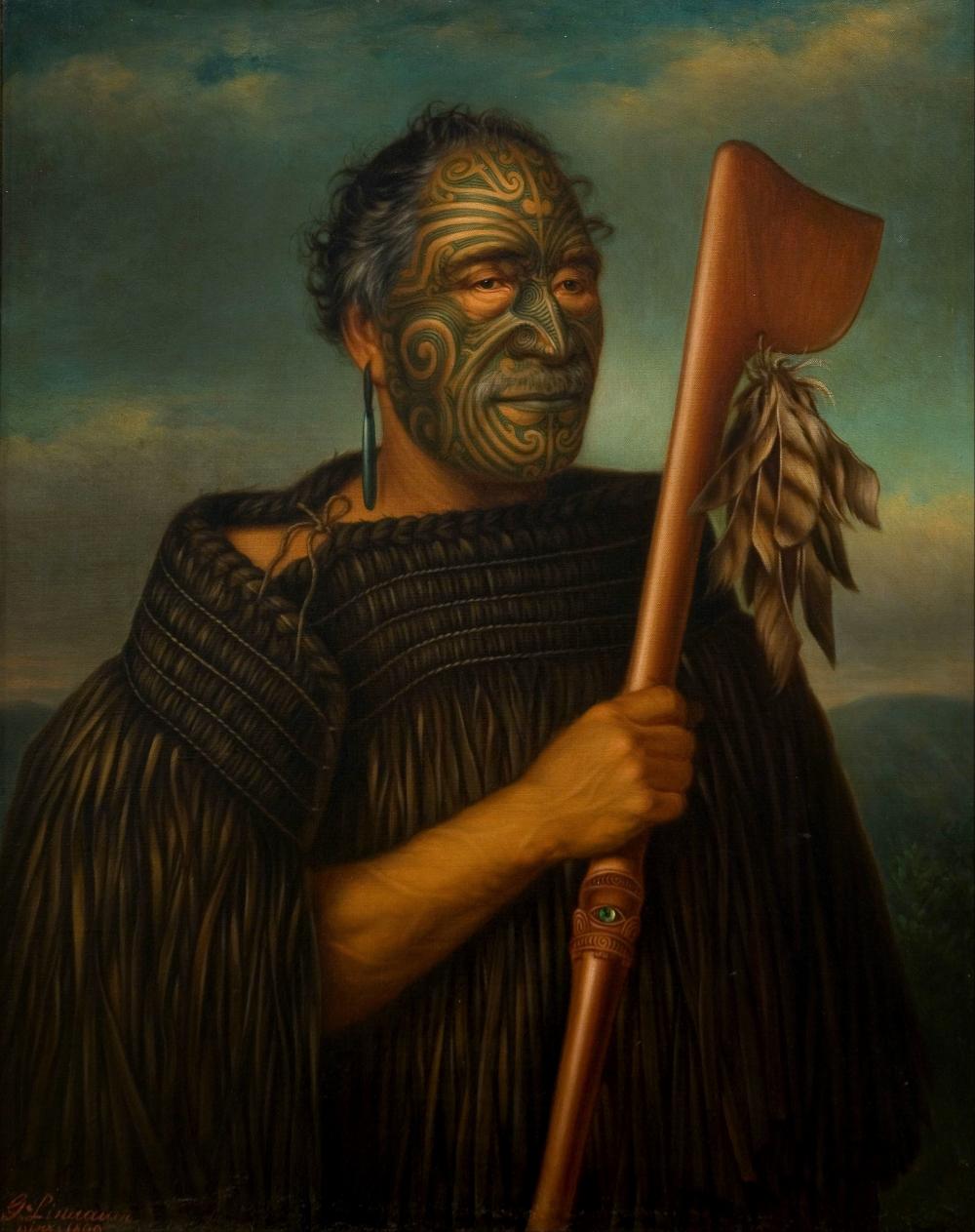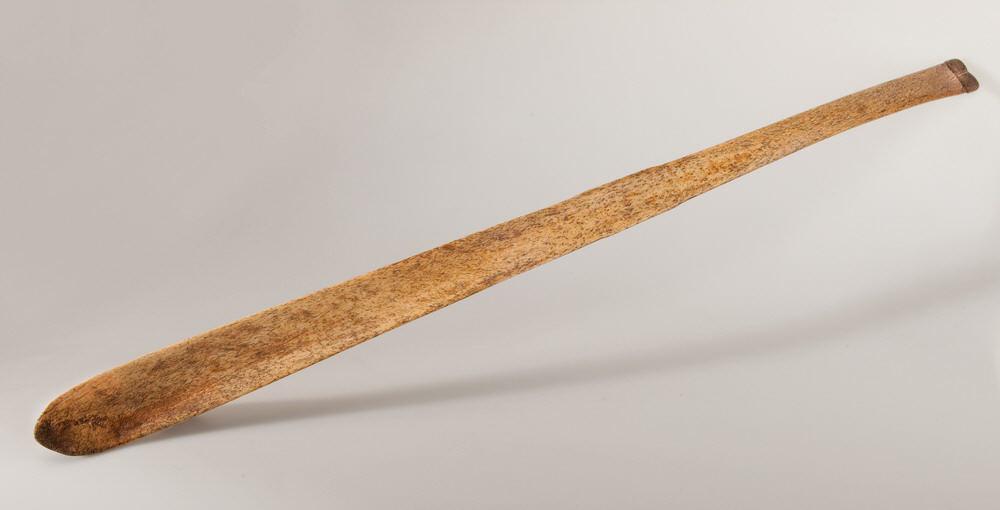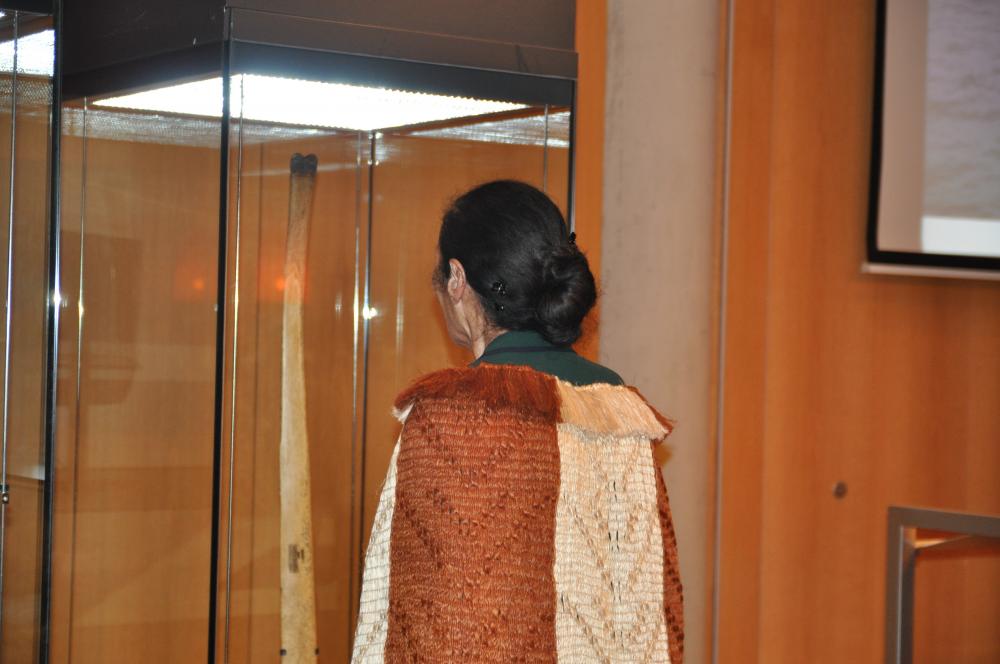
The lower jaw of a sperm whale was used for this 1 meter 20 long, eighteenth-century staff. Before the beginning of whaling around New Zealand (early 19th century), whalebone was very rare and thus very valuable. Maori, the original inhabitants of New Zealand (Aoteaora in Māori), did not hunt whales, but did use everything from the beached animals. Since whales were a rich source of food, objects made from whalebone allude to leadership and the ability to sustain the community. Objects made of whalebone showed the mana (power and authority) of a leader. Moreover, whalebone is very hard and durable, making it perfect for making weapons.


